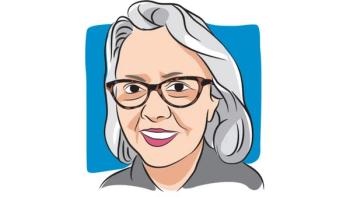
Active Surveillance for Disease Progression in TNBC
A leader in breast oncology and a triple-negative breast cancer survivor discuss the role of active surveillance for post-surgical disease progression and emphasize the importance of support from health care providers after recurrence.
Episodes in this series

Aditya Bardia, M.D., MPH: After surgery, the paradigm is usually to monitor the patient closely, what we call active surveillance. Tell us about your experience during that period. That can be a very distressing time. The tumor is out, the radiation is done. Now it’s pretty much a waiting game. You always worry that the cancer could come back. Sometimes that transition can be difficult. It can be a difficult time. Tell us about your experience during active surveillance.
Latasha Jordan: Yes, that was one of my thoughts, “Is it going to come back?” I would be lying if I said I didn’t think about that often. I did. I went through the radiation. I took the chemotherapy pills. I honestly said, “OK, this is it. Once I take the chemotherapy pills, I’m going to be all set. Next year, boom, I’m going to be ready.” Then I was walking to work and I noticed I was breathing differently. I was like, “Why am I out of breath so fast and so easy?” I was noticing that, but I had to go to my appointments.
In one of my appointments, they were checking me. While they were doing the vitals they asked, “Is your heart hurting?” They were asking me all of these questions, and I’m looking at them like, “No, I’m fine.” My doctor said, “Well, I’m going to have you get an X-ray so we can see what’s going on.” So, I did that. I had another appointment. I was smiling and thinking, “I’m ready for the good news.” I’m like “Yes, everything’s good.” She’s smiling, but she sits closer to me. She held my hand and said, “It’s spreading.” And I’m like “OK. All right.” And then she said, “We don’t have the treatment that you need, but I’m not going to give up. I’m going to have you go to Mass General [Massachusetts General Hospital]. I’m going to make some phone calls. Look for a call from Mass General.” What I love about my doctor is that she never gave up on me. Even if I wanted to give up, she would not let me. She was there to remind me that, “We’re going to do this. We’re going to fight this. Don’t worry about anything. You don’t need to worry about anything. Let me worry about it.”
Aditya Bardia, M.D., MPH: She was with you during the journey.
Latasha Jordan: She definitely was.
Aditya Bardia, M.D., MPH: What you’ve described is something that we tend to see with triple-negative breast cancer. As we were discussing earlier, it’s a subtype that’s associated with more aggressive tumor biology and has a higher risk of recurrence. For triple-negative breast cancer, if it spreads or comes back, it tends to come back in the first three to five years after surgery. Once the surgery’s done, the key is close monitoring like you were doing. There’s nothing different you could have done. From a research perspective, there’s interest in developing blood tests to detect tumor fragments or what we call circulating tumor DNA in the blood. There are a couple of companies that are making those tests. It’s in the research phase at this time, but if that pans out that could change how we monitor things in this setting. As you were highlighting, Latasha, that is something you constantly think about. Once the surgery is done, once the radiation is done, once all the treatment is done, it's important to be followed. But outside of visits and mammograms, there’s no way to know if the cancer is still there or if it’s growing. So having a blood test in that setting could be very valuable, and there’s ongoing research.
In general, when the cancer comes back it tends to cause symptoms, some shortness of breath or back pain. That is usually what prompts the physician to get an additional evaluation like a CT [computed tomography] scan or a bone scan. And if we see something on a CT scan, that’s when we can biopsy what we are seeing and evaluate it under the microscope to confirm if it is indeed breast cancer. Sometimes it could be something else. But often, it is breast cancer, particularly in the setting of triple-negative breast cancer, which tends to come back in the first three to five years and usually spreads to the lung and liver.
Transcript edited for clarity.






